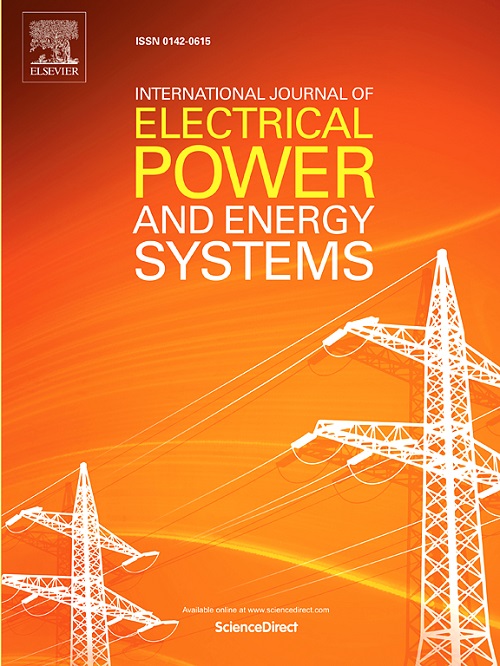Accurate detection of critical LLFs and LGFs in PV arrays based on deep reinforcement learning using proximal policy optimization (PPO)
IF 5
2区 工程技术
Q1 ENGINEERING, ELECTRICAL & ELECTRONIC
International Journal of Electrical Power & Energy Systems
Pub Date : 2025-04-16
DOI:10.1016/j.ijepes.2025.110661
引用次数: 0
Abstract
Critical line-to-line faults (LLFs) and line-to-ground faults (LGFs) in photovoltaic (PV) systems are the most difficult faults to detect not only by conventional protection devices, but also modern fault detection schemes. The difficulty occurs due to critical mismatch levels and/or high fault impedance values which result in LLFs and LGFs remain undetected thus damaging the PV components, affecting system stability, reliability, and efficiency, and even leading to catastrophic fire hazards. However, challenges persist even in recent studies, including the need for a massive training dataset, disregard of fault severity assessment, and insufficient model accuracy. To address these challenges, the present paper proposes a deep reinforcement learning (DRL)-based model to detect, classify, and assess the severity of all and specifically critical LLFs and LGFs in PV arrays using the proximal policy optimization (PPO) algorithm. Additionally, to carry out the dataset dimensionality reduction, thus simplifying the training process, a two-stage feature engineering process has been implemented, including a feature importance finding stage using the permutation technique and a feature selection stage. To implement the proposed model and verify its capability in real-life condition, a laboratory PV system has been carefully designed. The results of the real-world experiment shows that the proposed model is able to detect LLFs and LGFs, under various environmental (temperature and irradiance), and electrical (mismatch and impedance) conditions with outstanding 100% of accuracy in the test process, using only a small training dataset.
基于深度强化学习的近端策略优化(PPO)光伏阵列临界低电压和低电压的精确检测
光伏系统中的关键线对线故障(LLFs)和线对地故障(LGFs)是传统保护装置最难检测的故障,也是现代故障检测方案最难检测的故障。这种困难的发生是由于临界失配水平和/或高故障阻抗值导致llf和lgf无法被检测到,从而损坏PV组件,影响系统的稳定性、可靠性和效率,甚至导致灾难性的火灾危险。然而,即使在最近的研究中,挑战仍然存在,包括需要大量的训练数据集,忽视故障严重性评估,以及模型准确性不足。为了解决这些挑战,本文提出了一种基于深度强化学习(DRL)的模型,该模型使用近端策略优化(PPO)算法检测、分类和评估光伏阵列中所有特别是关键的llf和lgf的严重程度。此外,为了进行数据集降维,从而简化训练过程,实现了一个两阶段的特征工程过程,包括使用置换技术的特征重要性发现阶段和特征选择阶段。为了实现所提出的模型并验证其在现实条件下的能力,我们精心设计了一个实验室光伏系统。现实世界的实验结果表明,所提出的模型能够在各种环境(温度和辐照度)和电气(失配和阻抗)条件下检测llf和lgf,在测试过程中仅使用一个小的训练数据集,准确率达到100%。
本文章由计算机程序翻译,如有差异,请以英文原文为准。
求助全文
约1分钟内获得全文
求助全文
来源期刊
CiteScore
12.10
自引率
17.30%
发文量
1022
审稿时长
51 days
期刊介绍:
The journal covers theoretical developments in electrical power and energy systems and their applications. The coverage embraces: generation and network planning; reliability; long and short term operation; expert systems; neural networks; object oriented systems; system control centres; database and information systems; stock and parameter estimation; system security and adequacy; network theory, modelling and computation; small and large system dynamics; dynamic model identification; on-line control including load and switching control; protection; distribution systems; energy economics; impact of non-conventional systems; and man-machine interfaces.
As well as original research papers, the journal publishes short contributions, book reviews and conference reports. All papers are peer-reviewed by at least two referees.

 求助内容:
求助内容: 应助结果提醒方式:
应助结果提醒方式:


